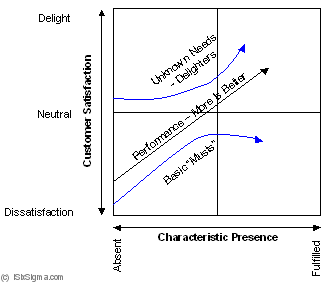
How often have you been truly delighted by a dining experience? Recently, a co-worker and I had the good fortune to have such an experience. We were in Arizona to deliver Six Sigma DMAIC (Define, Measure, Analyze, Improve, Control) training, and had dinner at the Macaroni Grill #135 in Phoenix. Our waiter was attentive and the food was good. We thoroughly enjoyed our dinner, but we were unable to finish it. The manager, Renee, stopped by to say hello and to ask whether we were enjoying our visit to the area and our meal. While we chatted, she offered to box our leftovers for us, at which time, my colleague requested that the sprig of rosemary that garnished her plate be included. She explained that for her, the rosemary represented a comforting smell and one that reminded her of her childhood.
While we finished our coffee, Renee prepared our take-home boxes and returned them to us with her thanks for visiting the restaurant and an invitation to return when we visited the area once more. The next day, we opened the bag containing our boxes. Imagine our surprise when we found not only our leftovers, but also a fresh loaf of bread, several large sprigs of rosemary, and a personal note of thanks from Renee for visiting the restaurant and wishing us well in our travels.
Needless to say, our dining experience delighted us, and the thoughtfulness of the manager, Renee, astounded us. This example provides an opportunity to examine our dining experience through the well-known Kano Model of customer satisfaction. The model, developed by Japanese quality expert Dr. Noriaki Kano, describes the complexities of customer needs and their relationship to customer satisfaction in an easy to understand visual format. It provides insight into product and service attributes that are perceived as important to customers and is an important tool for helping teams focus on differentiating features, those that will set them apart from their competitors.

The lower curve of the model reflects basic customer needs, those basic functions or features that customers normally expect of a product or service. The absence of these factors will lead to customer dissatisfaction and can result in complaints and/or lost business. If present or fulfilled, these attributes contribute to customer neutrality. In other words, the customer expects that their basic needs will be fulfilled. Attaining high levels of customer satisfaction is hard to achieve by excelling in these areas alone.
Next, there are the performance attributes. Generally, the better these functions or features perform the greater the level of customer satisfaction. Finally, the upper curve of the model represents those features or functions that delight and excite customers, the unspoken or unexpected needs of the customer that when satisfied, lead to high-levels of satisfaction. In competitive situations when products or services provide similar performance, addressing the attributes that delight and excite customers can provide a competitive advantage.
Differentiation between products and services is achieved by high-levels of execution of the performance attributes combined with the inclusion of one or more customer delighter features. This combination provides the greatest opportunity for competitive advantage.
Let’s examine our recent dining experience in terms of the Kano Model. My coworker and I had certain expectations for our meal before we even arrived at the restaurant. For instance, we expected that the service would be prompt and friendly, the food good and reasonably priced, and that the restaurant be clean. These can be likened to basic needs or attributes that must be met in terms of customer satisfaction. If these needs go unfilled, customers will certainly be dissatisfied. Total absence or poor performance in any of these attributes could result in extreme dissatisfaction. However, even if these needs are completely fulfilled, there is no guarantee that customers will be particularly satisfied or return for subsequent meals at the establishment.
Next, consider the performance attributes. As described earlier, these have a linear effect on customer satisfaction (i.e., more is generally better) and good performance in these areas will improve customer satisfaction. Additionally, the price customers are willing to pay for goods and services is closely tied to these attributes. For example, customers of the restaurant may be willing to pay more for the ambience of the restaurant, a fine wine selection, and prepared-fresh made-to-order dishes. The better the restaurant is in meeting these needs, the higher the likelihood that customers are satisfied with the total dining experience.
Finally, there are those attributes sometimes called excitement attributes or delighters. Again, these are unexpected by the customer, but when present can result in high levels of customer satisfaction or customer “wows.” Take for example, the extra rosemary and loaf of bread that was tucked into our packages of leftovers. Then there was the personal note of thanks from Renee. This personal touch was certainly unexpected and a delighter that ensured we would return to be delighted again on some future date.
Our experience illustrates how the simple, but powerful Kano Model is useful in helping teams understand the difference between basic, performance and delighter features. By designing in and focusing improvement efforts on those features that create customer delight, there is a much greater chance of keeping your current customers and gaining new ones.
We have used this story on several occasions as an example of outstanding customer service. Additionally, when we returned to Phoenix several weeks later, you guessed it, we beat a path back to the Macaroni Grill, and a number of participants from our DMAIC training class dined there as well.
It goes to show you that a little something extra, and a small kindness, can have solid business results and be a very good investment. Provide the basics, and then deliver outstanding customer service and you will create customer loyalty. Customers will return again and again to be delighted.